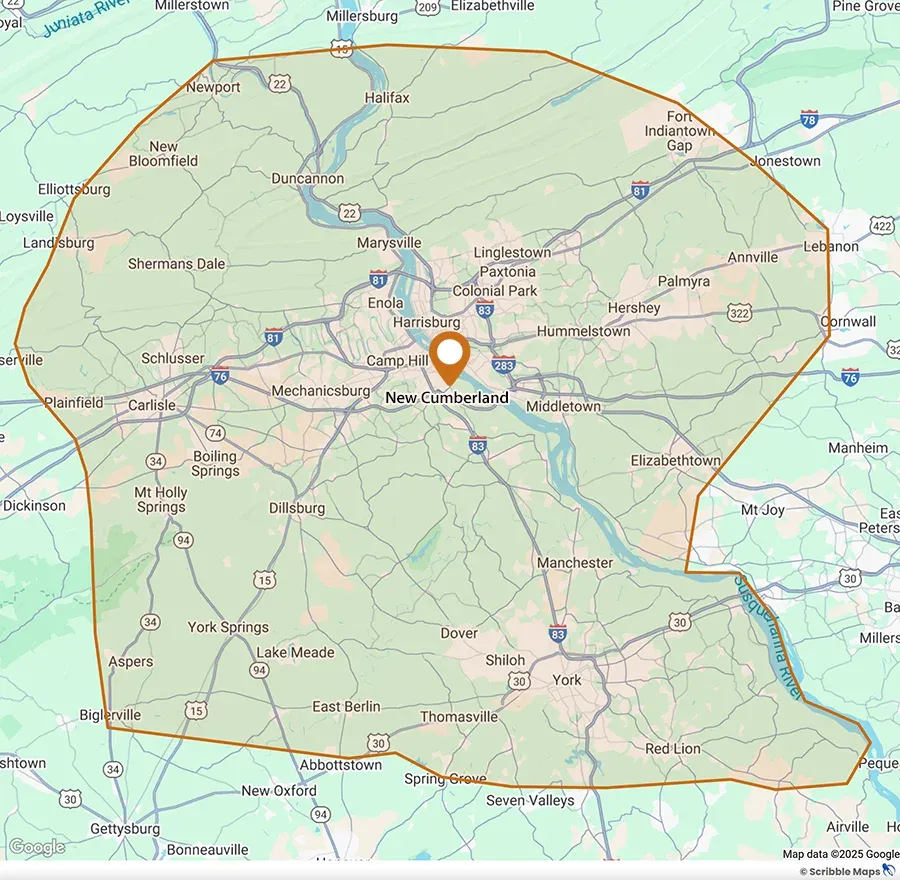
Mosquito, Flea & Tick Control in Central Pennsylvania
When the warmer months arrive, so do mosquitoes, fleas, and ticks—and they’re more than just a nuisance. These pests can transmit diseases like Lyme disease and West Nile Virus, putting both your family and pets at risk. At Sudden Death Pest Control, we offer liquid treatments that provide effective control over these pests, keeping your outdoor spaces safe and enjoyable all season long.
Satisfaction Guarantee
We stand by our work with a customer satisfaction guarantee on all mosquito, flea, and tick treatments. If you’re not completely satisfied with the results, we’ll work with you to make it right, whether that means scheduling additional treatments or addressing any concerns.
Effective, Safe, and Fast-Acting Treatments
Our preferred treatment method for mosquitoes, fleas, and ticks is a combination of liquid applications and granular treatments, proven to be the most effective and long-lasting solution for our region’s climate and pest activity. These treatments are applied strategically across your property—focusing on areas where these pests breed and hide, like the yard, shaded areas, and vegetation.
Here’s how our service works:
- Inspection and Evaluation: We start by inspecting your property to identify any hotspots and assess the best places to apply the treatment. This ensures we’re using the right amount of product in the right spots for maximum impact and safety.
- Treatment Application: Our certified technicians apply both liquid and granular treatment sto the most effective areas, such as the yard perimeter, trees, shrubs, and other areas where pests are most active.
- Customer Walkthrough: Once the treatment is complete, we walk you through the work that was done, explain what to expect, and answer any questions you may have.
- Fast Results: You’ll begin seeing noticeable reductions in mosquito, flea, and tick activity within 72 hours—and the effects typically last for several weeks.
We typically recommend 3 to 4 treatments per year, timed for when pest activity is highest—usually during the warmer months. Your technician will work with you to schedule the treatments based on the unique needs of your property.
Flexible Service Plans to Fit Your Needs
Our mosquito, flea, and tick control service is available as part of our Armory Package, which is our most comprehensive pest control plan that provides year-round protection. This package includes everything from basic pest control to seasonal treatments for mosquitoes, fleas, and ticks, ensuring your home is shielded from a wide range of pests.
Already on a different plan? No problem. Customers on our Sharp Shot or Full Scope packages can easily add this service at discounted rates for seasonal pest protection.
Enjoy Your Yard Again
Don't let pests ruin your outdoor enjoyment. Whether you're hosting a summer BBQ, playing with your pets, or simply relaxing on the porch, Sudden Death Pest Control can help you reclaim your yard. Contact us today to schedule your first treatment or learn more about our Armory Package for full-service protection.
Areas We Service in Central PA
If you're looking for a mosquito, flea, or tick control service in Central Pennsylvania, then look no further than Sudden Death Pest Control. Our team services various cities in this area, including:





